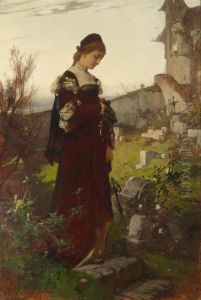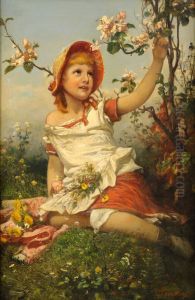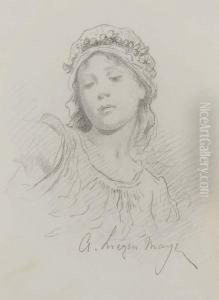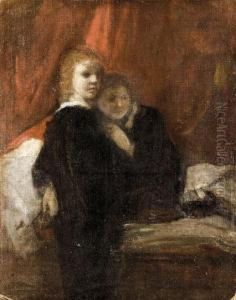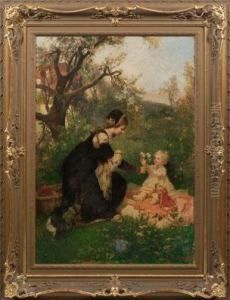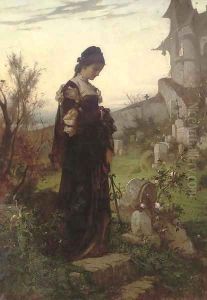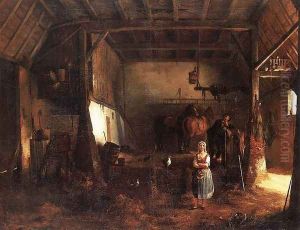Sandor Liezen-Mayer Paintings
Sándor Liezen-Mayer was a Hungarian painter, born on January 20, 1839, in Győr, Hungary. He is recognized for his contributions to portrait painting and historical themes. Liezen-Mayer initially studied at the Academy of Vienna before moving on to the Munich Academy, which was a significant center for art and learning during the 19th century.
In Munich, he was influenced by the works of Karl Theodor von Piloty, a renowned history painter of the time, and this influence is evident in Liezen-Mayer's later works. He embraced the detailed and dramatic style of historical painting that Piloty advocated. Liezen-Mayer began to gain recognition for his historical paintings, which often depicted scenes from Hungarian and European history, as well as literary subjects.
Throughout his career, Liezen-Mayer received several prestigious commissions. He was well-known for his portraiture, and his ability to capture the likeness and character of his sitters was highly regarded. His portraits included many of the notable figures of his time, both in Hungary and abroad. In addition to portraits, he also painted religious subjects and was involved in the decoration of various churches.
Liezen-Mayer's work was widely exhibited, and he participated in numerous international exhibitions, receiving various awards and honors for his paintings. His style remained consistent throughout his career, with a strong emphasis on realism and historical accuracy.
Sadly, Sándor Liezen-Mayer's life came to an early end when he died on September 19, 1898, in Munich, Germany. Despite his relatively short life, his artistic legacy endured, and he is remembered as a significant figure in Hungarian art history. His works continue to be appreciated for their technical skill, historical value, and the insight they offer into the 19th-century European society.

